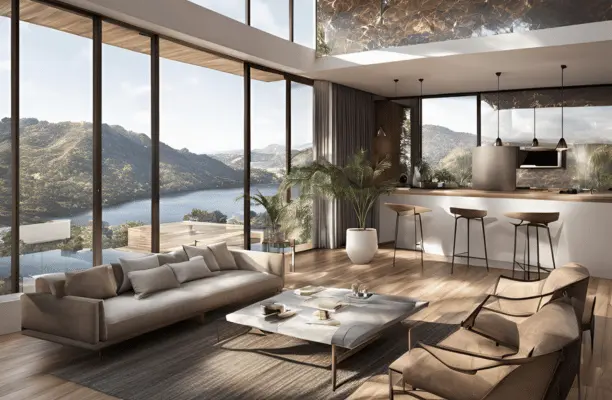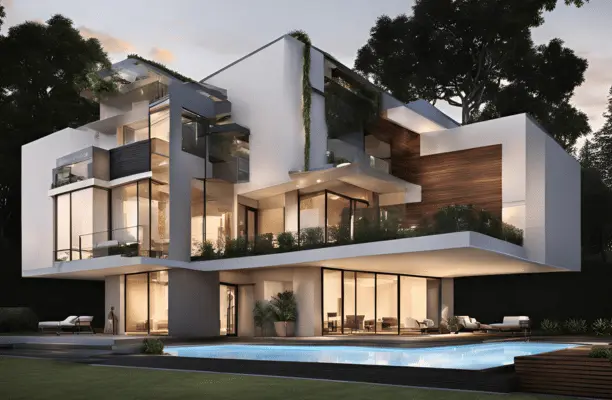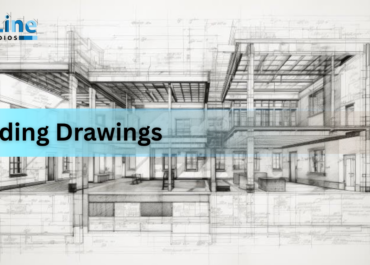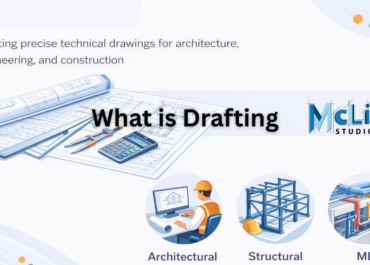The simple answer to this question is yes! Photorealistic architectural rendering is worth it. Imagine seeing the building or final product before even it’s built. That’s what these photorealistic architectural renderings do. Photorealistic renderings are like real-life super-detailed images that show how a building or space will look when it’s finished.
However, the making of these detailed images requires a lot of effort, time, resources, and money. So many people are curious about the worth of photorealistic renderings. This brief guide will help you to understand the worth of photorealistic architectural rendering and clarify whether these detailed images are for you or not.
Let’s begin!

What Is Photorealistic Architectural Rendering?
Photorealistic architectural rendering is a computer-generated technique used in architecture and design to create highly detailed, lifelike images of buildings and spaces before they are constructed.
This process combines 3D modeling, texturing, lighting, and rendering to produce images that closely resemble photographs of real structures. The key elements of photorealistic architectural rendering are:
- Accurate geometry: This means creating a detailed 3D model of the building that’s true to its planned design. It includes all the architectural features, correct sizes, and proportions.
- Realistic materials: This involves adding textures and colors to the 3D model that look like real-world materials. For example, making walls look like actual brick or wood, and windows appear as real glass.
- Lighting simulation: This is about adding light sources to the scene that behave like real light. It includes sunlight, artificial lights, and how these lights interact with the building and its surroundings.
- Environmental details: This means adding elements around the building to make the scene more realistic. It could include trees, people, cars, or even weather effects like rain or snow.
- Camera settings: This involves setting up the virtual camera in the 3D software to mimic real-world photography. It includes choosing the right angle, focal length, and depth of field to make the image look like a real photograph.
- Post-processing: This is the final touch-up done to the rendered image. It might involve adjusting colors, adding subtle effects, or enhancing certain parts of the image to make it look more realistic and appealing.
These elements work together to create a final image that looks as close to a real photograph as possible, even though the building doesn’t exist yet in real life.
Tips For Photorealistic Architectural Rendering
The process of creating photorealistic architectural renderings is complex. It requires attention to detail and an understanding of several key elements. Here are some tips to achieve high-quality results:
Controlled Lighting
It is good to simulate the real-world lighting conditions. Try to use tools like V-Ray or Corona to mimic the sunlight, considering the time of day, weather conditions, and geographic locations. Also, use the interior lights to add warmth and depth. The important thing is to balance the artificial light sources with natural lighting to avoid overexposure.
Use Of High-Quality Textures
Try to make the render more realistic so apply high-resolution textures that reflect real-world materials like wood, stone, and metal. Make sure that textures have appropriate bump, reflection, and displacement maps. You can also add subtle imperfections like scratches to make it more realistic.
Optimize Camera Settings
Use camera angles that reflect how a photograph would be taken. It is always better to avoid extreme perspectives unless necessary. Add a slight depth of field to mimic real-world camera effects, making the focus points sharper and background elements softer.
Attention To Details
Make your scene more populated. Populate the scene with detailed furniture, plants, and decor elements. Use models that have realistic proportions and finishes. It is always good to include background elements like trees, people, vehicles, and neighboring buildings to give context and scale to your rendering.
Refine The Post-production
Adjust colors, contrast, and saturation in post-processing software like Photoshop. Fine-tune the image to make it visually appealing while maintaining realism. Add subtle effects like fog, glare, or bloom to improve the mood and realism of the scene.
Who Uses Photorealistic Architectural Rendering?
Generally, the photorealistic architectural rendering by the various individuals involve in the construction and designing industry.
Majorly, architects use photorealistic architectural rendering to create life-like images of buildings they’ve designed but haven’t built yet. These renderings help them show clients what the finished project will look like.
Real estate developers also use these renderings to promote properties that are still being planned or built. They can create eye-catching marketing materials to attract buyers or investors before construction even starts.
Interior designers use this technology to visualize how different furniture, colors, and layouts will look in a space. This helps them and their clients make decisions about room designs. Lastly, other individuals like urban planners, homeowners, artists, and filmmakers use photorealistic architectural rendering for their projects.
Key Notes
To sum it up, photorealistic architectural renderings are not just a luxury but a valuable tool in today’s design and construction industries. These hyper-realistic images provide a clear, detailed preview of a project, bridging the gap between imagination and reality. These renderings help in better communication and better decision-making.
While creating photorealistic renderings requires significant effort, time, and resources, the benefits they offer often outweigh the costs. They help architects, developers, and designers convey their vision more effectively, attract potential investors, and avoid costly mistakes during the construction process.
So, photorealistic architectural renderings are worth the investment for anyone involved in a design or construction project. Whether you’re an architect presenting a concept, a developer selling a vision, or a homeowner visualizing your dream space, these renderings provide a level of clarity and detail that traditional blueprints or sketches simply cannot match.




